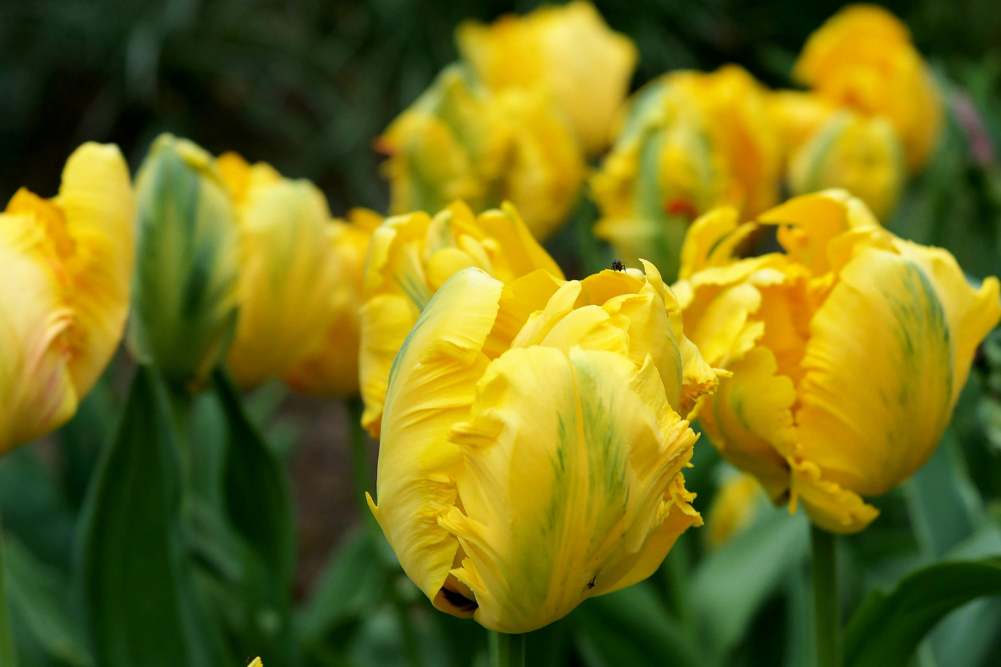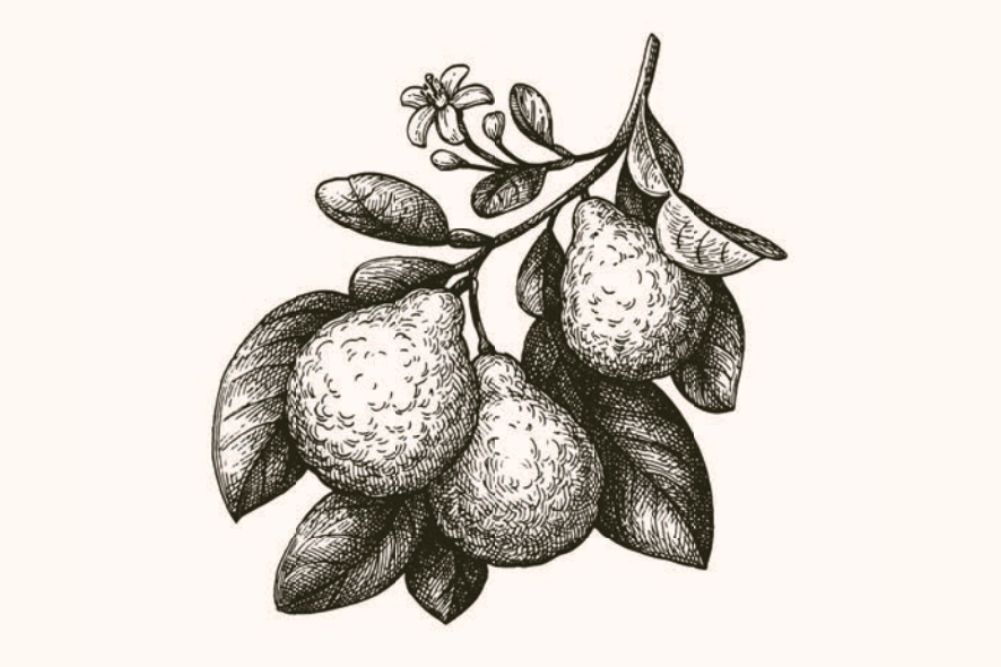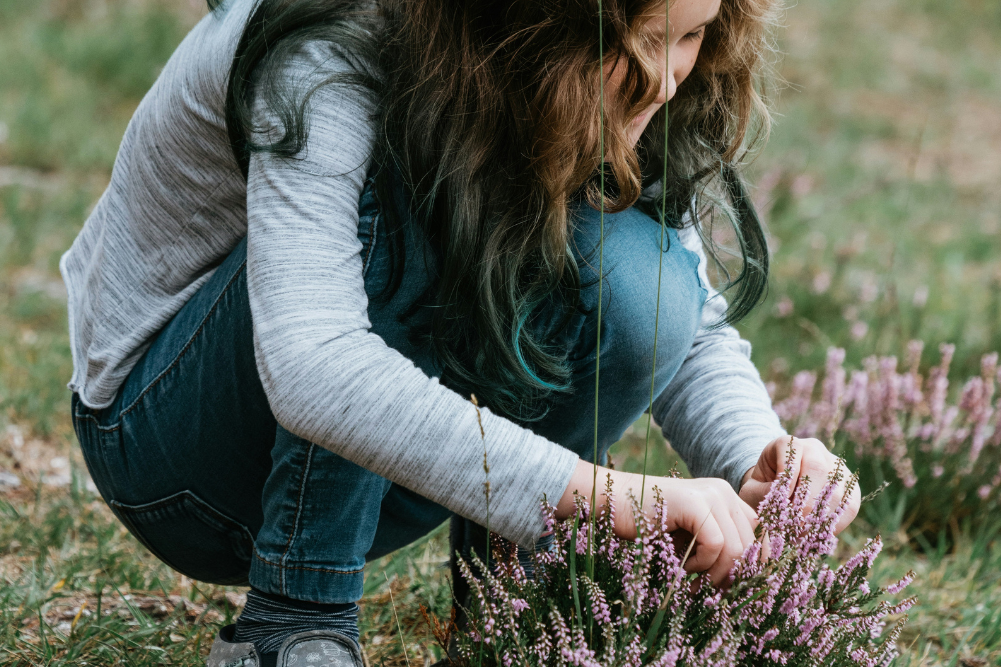How to design a butterfly garden
While strolling through a friend’s garden recently, I noticed scores of beautiful butterflies fluttering gracefully about. Dancing in the gentle breeze, wings stretching up to the sun, they floated from flower to flower, creating a place of peace and breathtaking Beauty.
It turns out that having so many butterflies in residence was not just a happy coincidence. By planting the right plants, creating an environment that nurtures butterfly caterpillars and providing food for the adult butterfly, you too can create a gorgeous garden filled with butterflies.
Bring life to a garden
Butterflies bring colour, spirit and movement into a garden, creating biodiversity and fertilising plants. This is because these beautiful insects, while daintily sipping nectar from a flower are also pollinating it. Densey Clyne, author of Attracting Butterflies to Your Garden, says butterflies are drawn to a garden that “romps and riots, a garden that’s a little wild, where self-sewn seeds mix happily with inoffensive weeds and wildings, and just once in a while lawn lapses into meadow”.
That’s good news for laidback gardeners who don’t mind a sprawling garden with a few weeds peeking out among their blooms. However, you need not limit yourself to a rambling cottage-style garden to attract butterflies.
According to Chris Gill from Room Landscape Design, to design a butterfly garden you just need to incorporate certain elements. “These include protection from winds, as well as sun, rocks, water and plants that will provide food for caterpillars and nectar for butterflies,” he says.
Get up close & personal
Australia is home to over 400 species of butterfly and New Zealand has around 2000. These butterflies can live in different climate zones and some are native, while others have accidentally found their way to our shores. Take the popular Monarch butterfly, for example. Jo Hammond, horticulturist from Butterfly Host Plants, says it hails from North America and is believed to have hitched a ride on a gulfstream to Australia.
Butterflies are known as lepidopterans, meaning having scaly or rough wings. Apparently, the tiny overlapping scales on their wings, which give them their name, reflect light and give butterflies their beautiful colours.
The butterfly’s not-so-popular cousin, the moth, is also part of the same family. However, Hammond says the humble moth also has an important role to play in the insect world. “Moths pollinate things that flower at night — for example, cactus and dragonfruit — and the Hawke moth is one of the few things that pollinate pawpaw,” she says.
Dancing in the gentle breeze, wings stretching up to the sun, they floated from flower to flower, creating a place of peace and breathtaking beauty.
The complete lifecycle of the butterfly involves four distinct stages: egg, caterpillar, pupa and adult butterfly. A female butterfly lays eggs on the host plant and, after a few days, the caterpillar inside eats its way out of the egg. It feeds on the leaves of the host plant and grows at an incredible rate, shedding the outer skin as it grows; then it becomes a pupa and eventually emerges as an adult butterfly.
Butterflies are welcome additions to a garden, but leaf-munching caterpillars are usually not. Of course, therein lies the dilemma: you can’t have one without the other. Every time you kill a caterpillar, you’re killing a butterfly, says Hammond. “For me it’s the equivalent of a bell ringing and a fairy dying,” she says. “Kill all the caterpillars and where will the butterflies come from?”
And, with butterfly numbers declining the world over, we can ill afford to lose more. For example, populations of the migrating Monarch butterfly have declined over the past two decades and the luminous green-and-yellow Richmond Birdwing butterfly — the largest butterfly to live in the Australian subtropics — is now classed as vulnerable to extinction.
As for Hammond, given her passion for butterflies, it’s probably no surprise that her interest in the plight of the butterfly began when she became one. Well, for a short time at least. Working at the Woodford Festival for Helen Schwencke, co-author of Create More Butterflies, Hammond donned a giant set of butterfly wings and flitted among the crowds.
Hammond blames the demise of butterfly populations on mass land clearances. “They strip native bushland and build estates with ticky-tacky little houses, calling them Banksia Avenue and Blackbutt Lane, but there’s not a bloody tree in sight,” she says. “Then they plant exotic bushes that no wildlife — and certainly no butterflies — are interested in.”
Bugs & stuff
The other thing that is killing off hordes of butterflies is chemical sprays. “Butterflies taste with their feet,” says Hammond. “If they land on a plant with chemicals, it will kill them whether they eat from the plant or not.” Instead of chemicals to keep the bad bugs at bay, try natural alternatives such as companion planting, handpicking bugs or garlic, chilli or molasses sprays.
There are also a couple of butterflies that might make your bad bug hit-list, too. White Cabbage Tree butterfly caterpillars will happily destroy the crops of home gardeners who grow brassicas such as broccoli, cauliflower, kale and Asian greens.
According to Chris Gill, the Cycad Blue butterfly is also a pest. “They will decimate your cycads,” he says.
Design a butterfly garden
To design your very own butterfly garden, think about what type of garden you’d like to create. You can have a butterfly-attracting garden that’s a pretty play space for children, a leafy edible kitchen garden, a quiet Japanese Zen-like space to relax in or a contemporary minimalist garden, or you can even bring butterflies into a potted balcony garden.
Steve Webb, landscape architect and permaculture designer with Edible Kids Gardens, says that to create a vibrant natural child’s butterfly garden you should plant a broad range of blooms of all shapes and sizes. “Kids and butterflies love colour and a variety of flowers,” he says. “Try planting flowers such as Butterfly Bush, or Fairy Fishing Rods, which are great for a pre-schoolers’ garden.”
Webb adds that butterfly gardens offer a natural and unique learning experience for children. “They can keep a log of the different species they see and have a lot of fun learning and seeing butterfly lifecycles first-hand.”
Perhaps you’d prefer a more exotic or Oriental-themed butterfly garden? Plant some red pentas and Oriental poppies, which butterflies love. Add a curved water bowl, fill it with a small amount of water and elevate it so toads can’t get to it. For a Zen-like feel, Gill suggests adding a raised platform with comfy cushions and an open-weave arbour above to let dappled sunlight through. “When you aren’t there enjoying it, your butterflies will be there sunning themselves,” he says.
For a potted butterfly garden, choose a mix of pots and plant with perennials that flower at different heights, to attract different butterflies. And if space is an issue, you can always go vertical. Use wall spaces and plant climbers to offer butterflies protection from predators, or hang pots from wall structures.
Gill says that how you prune your plants also plays a part in the overall look of the garden. “Native mulberries are butterfly-attracting; you can allow the mulberry to become rambling for the kids to climb or espalier it for a formal look,” he suggests.
Colour me happy
Vibrantly coloured flowers bring butterflies to a garden. Bright purples, flaming oranges, ruby reds and sunny yellows will have butterflies lining up on your nectar plants in droves, their little antennae quivering in anticipation. Butterflies also prefer shallow flowers they can sip nectar from: they have a long tubular tongue, called a proboscis, which allows them to feed on the nectar.
Go with the flow
Butterflies need access to water, as they extract minerals from it, and a little bit of mud is good, too. According to Webb, creating naturalistic boggy areas will bring in the butterflies. “It depends how you sculpt the soil in the landscape,” he says. Build a shallow, meandering creek with spots where water can pool and line it with stones or broken bits of sandstone so, if it becomes a little muddy, you can walk across it. “Along either side, plant native sedges, plants that normally grow along rivers and can cope with the extremes of drought or being waterlogged,” Webb says.
Rocks & pebbles
Butterflies are cold-blooded; they need to bask in the sun and warm up before they take flight each day. So add rocks to your garden, as they absorb the sun’s heat and offer a place for the butterflies to soak up some rays. Webb suggests using natural stone for terracing in the garden, or watermelon-sized boulders that kids and butterflies will gravitate to. “Stones have interesting fissures, textures and colours, and can also provide seating or stepping stones for kids to climb.”
Sweet sunshine
Butterflies feed in sunny areas, so where you position your plants is important in relation to the amount of sun they’ll receive at certain times of the day. According to Backyards 4 Wildlife, South Australia’s urban biodiversity program, a butterfly’s peak feeding time is mid-morning to mid-afternoon and ideally your butterfly food plants should receive sun then.
You also need to provide shelter from predators as well as from strong winds, which can damage butterflies’ wings.
Take a seat
Another reason we don’t see as many butterflies these days, reckons Hammond, is because we don’t look. “As a kid we’d sit in the long grass and make daisy chains. We’d just be in the moment; we weren’t rushing around,” she says.
So make sure when planning your garden that you provide seating so you can stop and stay a while. Try a romantic setting, a table and chairs for two, or a cosy daybed where you can watch the butterflies sail by. Alternatively, add a bench seat, or a hammock strung up under a leafy tree, for the perfect vantage point to enjoy watching the butterflies and kids at play.
Host plants: planting for butterfly caterpillars
Most gardeners will shudder at the thought of providing tucker for caterpillars but, as we’ve said, to attract the butterfly species you fancy, you have to provide the right host plants. It turns out they are fussy little critters, too. You might have what you think is a smorgasbord of caterpillar culinary delights in your garden, but they’ll only usually eat the host plant their eggs were laid on.
These beautiful insects, while daintily sipping nectar from a flower are also pollinating it
For example, the Dainty Swallowtail and Orchid Swallowtail eat citrus leaves, while the Australian Painted Lady likes the daisy family, in particular paper daisy and billy buttons. The Monarch enjoys milkweed and swan plant, and the Blue Triangle eats native laurels. Butterflies also vary in the number of host plant types they’ll eat. The vulnerable Richmond Birdwing only eats the birdwing vine, but the Common Australian Crow will eat oleander, star jasmine, milkweed, weeping fig and more.
Talk to your local native nursery to find out which butterfly-attracting host plants will grow well in your region, and which types of flowering plants will encourage the fully grown butterflies to call your place home. If you need further guidance, Chris Gill suggests bringing in the design experts. “Source a landscape designer who can bring all the elements together for you,” he says.
If you don’t want your host plants to be ravaged by caterpillars, plant lots of them so that a few missing leaves won’t be a big deal. However, the best thing to do is accept that you’ll have a few sacrificial plants, or grow robust plants so they can withstand a little caterpillar nibbling.
Flowers that butterflies prefer
Butterflies generally feed off nectar plants, particularly those with a yellow centre. They also prefer flowers with bright colours and like some flowers with open, flat petals so they can stand on them and feed.
Adult butterflies generally love grevilleas, butterfly bush, milkweed, daisy family, impatiens, clover, bottlebrush, veronica, verbena and valerian, cherry pie and lavender.
Butterflies like a mix of natives and a few exotics and, if you choose long-flowering plants, perennials or groups of flowers that bloom at different times of the year, you’ll have colour and butterflies most of the year.
How to grow caterpillar plants
Here are Jo Hammond’s tips for feeding and growing host plants.
1. Buy quality native compost (with a lower pH than regular potting compost, 5.5–6 so it’s a bit acidic).
2. Add vermiculite, a porous native rock that holds seven times its weight in water.
3. Sprinkle on slow-release native fertiliser.
4. Water in liquid seaweed and water leaves as well.
5. Mulch around the plant and water in the mulch with liquid seaweed.
Resources
lepidoptera.butterflyhouse.com.au








